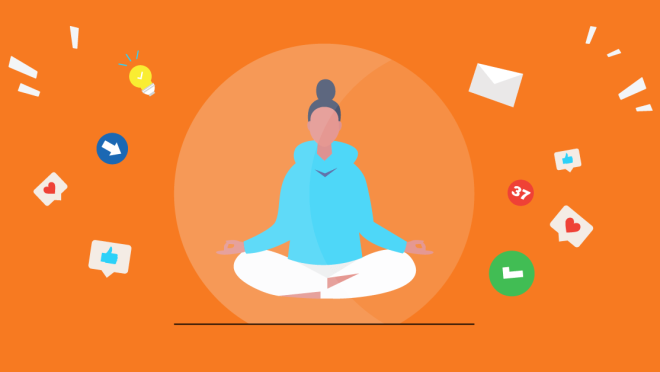Unplug to recharge: How a digital detox can save your sanity
Unplug to recharge: How a digital detox can save your sanity

Did you know that heavy media multitaskers often struggle to remember even a few things at once, as constant notifications and screen juggling overwhelm their working memory? So if you’re scrolling reels past midnight or binge-watching instead of sleeping, your brain is clearly overworked. A digital detox can give your mind a much-needed break and help you regain focus.
What’s digital detox anyway?
A digital detox means taking a break from screens and technology to give your mind a rest. Don’t worry, it doesn’t mean you throw your phone in the river and live in a cave. It’s about stepping back from phones, laptops, and social media for a set time.
The goal isn’t to quit technology forever but to use it more healthily. Some people go fully offline for a few days. Others limit certain apps, turn off notifications, or keep screen-free hours. A detox helps prevent the brain from becoming overstimulated and overburnt and allows to spend more time on real-life activities.
What we already know
We all know the benefits: less screen time can mean better sleep, fewer headaches, and more family time. Research from 2015 shows that too much screen time is linked to unhealthy eating and less physical activity, both of which are important for a healthy body and mind. A 2018 study also found that cutting back on social media can help reduce feelings of loneliness and depression. The benefits are clear, but if it were that simple, we wouldn’t be doomscrolling past midnight, right?
Under the surface
Believe it or not, the harmless-looking tiny screens are always scheming on how to keep you hooked. Algorithms decide what we see, showing content that grabs our attention. Every notification or funny reel gives a tiny dopamine rush, and so do the binge-worthy shows or addictive video games, keeping our brains wanting more. This constant reward system makes it easy to keep scrolling, watching, or playing without even noticing the time. Understanding this can help you see that you’re not alone and that it’s normal to get caught up.
Focus on triggers
Human brain craves authentic experiences, not just over-curated, ad-filled aesthetics. So, notice what makes you reach for them. Often, our phones act like a digital comfort, something we grab automatically when we are bored, stressed, or feeling socially anxious. It could be mindlessly checking your phone during a work break, scrolling when a deadline is near, or picking it up in an awkward silence.
Make hobbies fun again
Remember fun before screens took over? Once you spot the triggers, replace the habit with a small, positive action. Take a deep breath, go for a short walk, do a quick workout, or get creative with doodling, journaling, or reading a real book with pages you can actually flip. Try cooking something new, making clay jewellery, or knitting a scarf before winter. These activities feel authentic and help your mind recover from the dystopian overload of over-curated feeds. Remember, hobbies don’t need to be perfect; being simple, silly, and satisfying is the whole point.
Apps that will help
Ironically, your phone can actually help you spend less time on it. Do Not Disturb Mode is the simplest tool; no buzz, no pings, just peace. But if you want to explore apps that will help you even more, the ‘minimalist phone: Launcher’, can clear your home screen so you’re not tempted by flashy icons begging for attention. Apps like ‘Flipd’ lock distracting apps for a set time, keeping you focused, while ‘Headspace’ offers guided meditations to calm your mind and break the scrolling cycle. And if you need extra motivation, try the ‘Forest App’, where you grow a virtual tree by staying off your phone. But if you give in and check social media, your tree drops dead. Harsh, but surprisingly effective.
Plan for failure
Let’s be honest, you will probably slip up during your digital detox. Maybe you open Instagram “just for a minute” and suddenly it’s been thee hours. That doesn’t mean you’ve failed; it just means you need to reset and keep going. If you plan to go from screen addiction to no screen at all, then most obviously, you will fail. Think of it like learning to ride a bicycle; a few wobbles are normal, and with practice, staying offline will feel steadier and more natural.
Include a re-entry plan
When your digital detox ends, don’t dive straight back into every notification. Decide what stays off; maybe no push alerts, no endless TikTok binges during work or school hours, or social media only in the evenings. Even if you don’t plan your routine in detail like a primary school paragraph, at least have a mental map of your day. Allocating time for sleeping, eating, and working lets you create your own reward system, and completing tasks on time will make you more fulfilled.
A little mindful control goes a long way. Start a digital detox and find your balance so you can enjoy the best of both the digital and real world. Remember to set clear boundaries; so your phone works for you, not the other way around.


